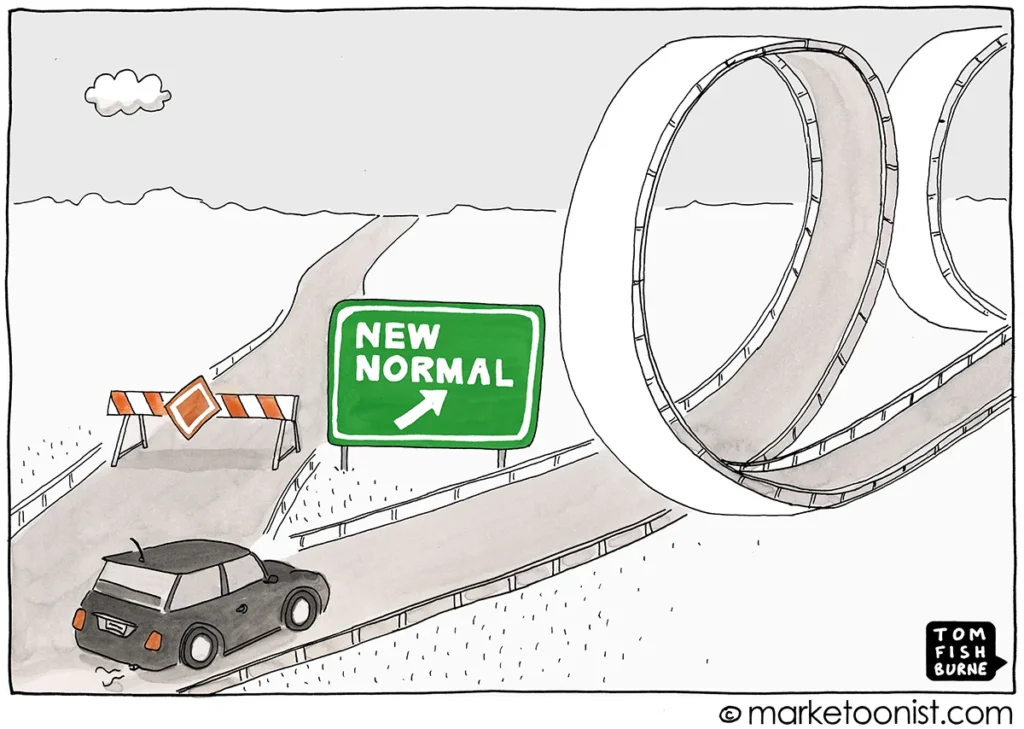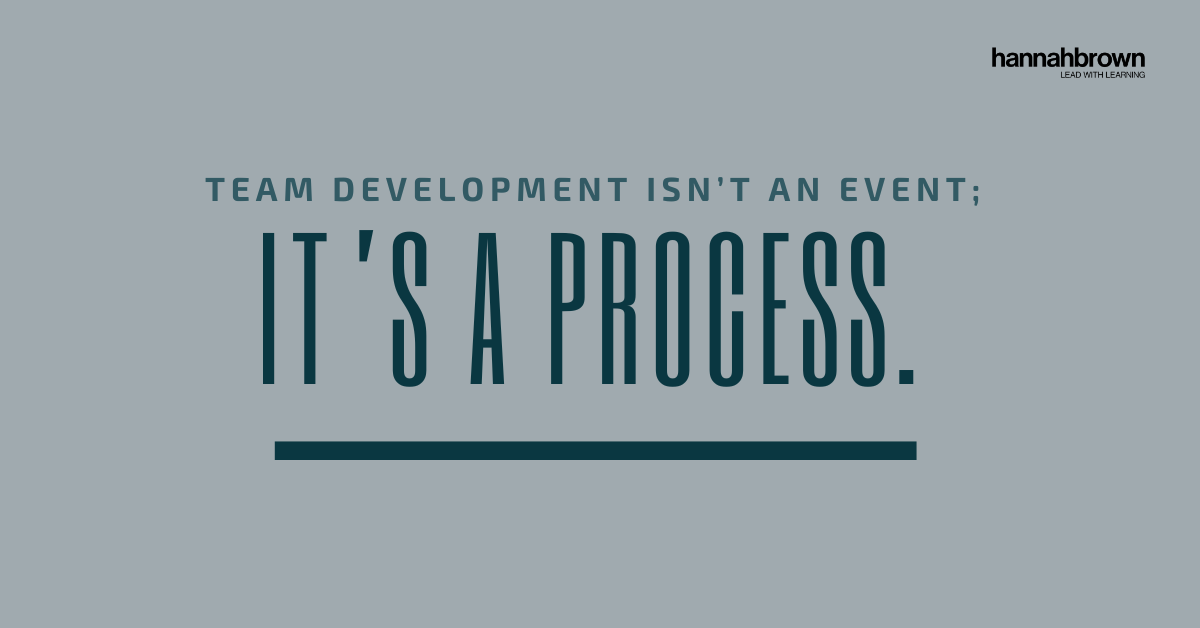How can leaders help their teams in the new normal?

I’m sure we’ve all used the phrase “the new normal” – I know I have! At this point, it’s been said so often that it risks losing its meaning. But this cartoon by Mark Fishburne landed in my inbox and brought it back to life for me. The new normal doesn’t roll in gently. It forces us to change direction and sets us on a course with peaks and plummets.
Team members look to their leaders for stability – for creating an environment that helps them adapt, grow, and learn in times of uncertainty. Having a learning mindset that nurtures curiosity and the courage to take risks is essential in creating this stability.
Leaders may not be able to stop the disruption, but they can prepare their teams to stay afloat. I often return to an analogy from my book, Into the Hands of Leaders: Employee Growth through Learning. Change is like a stadium quickly filling with water. Avoiding the change – the rising water levels – and racing for the exit with the hundreds of other ticket holders isn’t successful. Instead, leaders need to put on life jackets. And those life jackets? They’re resilience and adaptability.
Can you take a course in resilience and adaptability? Sure, but I suspect it will have limited impact. For leaders to develop resilience and adaptability in themselves and their teams, they need a learning mindset. They need to create space for reflection. It means encouraging curiosity, asking better questions, and helping teams process what’s happening – the peaks and plummets – instead of pretending things are fine. When leaders do that, they shift from just reacting to helping people grow through change.
The new normal isn’t about going back. It’s about moving forward – together, with learning at the core.
What space have you created this week for your team to reflect, ask questions, or process change?
From One-Off Events to Everyday Growth

Yet, too often, team development is an event. Many times, I’ve seen well-intentioned team-building efforts launched with enthusiasm, only to fizzle out after the workshop is over. Having had a full career in learning and development and as a consultant, I’ve worked with countless clients to design programs so that leaders can take the ideas forward with their teams. I’ve come to realize the real impact doesn’t come from what happens in the classroom. It comes from what leaders do back on the job.
I’ve started asking a different question when I work with HR and L&D teams: How do we design development programs that live beyond the training room?
The answer I’ve found is this: we move learning out of the classroom and into the hands of leaders. We equip leaders with the tools, resources, and space to nurture a learning mindset and foster a team culture of learning. We give them tools they can use with their teams in their daily work.
Team and employee development can’t be a one-off. It’s in the regular check-ins, the stretch assignments, and the reflective questions asked in the middle of a busy week. When we embed learning into leadership, not as a separate task, but as a way of leading, we create teams that are adaptable, resilient, and always growing.
How are you helping your leaders embed learning into everyday team interactions?
Develop Employees and Play Above Your Weight
Small and medium-sized organizations are among the most dynamic and resourceful places to work. But when it comes to developing people, they often face a tough reality: limited time, limited budget, and no internal Learning and Development team for leaders to lean on.
In larger companies, L&D teams often take the lead on employee development. But in smaller organizations, that responsibility lands squarely on the shoulders of leaders – people who are already stretched and focused on meeting day-to-day operational demands. Leaders in these organizations genuinely want to support their people, but they don’t know where to start—or don’t feel they have time to try.
Here’s the good news: employee development doesn’t have to be a big, expensive initiative. It’s not about slick programs or lengthy courses. It’s about helping leaders create space for growth in the everyday work of their teams. That might mean asking a reflective question during a check-in. Delegating with development in mind. Or just helping a team member unpack what they learned from a mistake.
When organizations invest in leaders early, especially as they step into their first people leadership roles, they build the foundation for a learning-driven culture within their team and across the organization. That early support sets the stage for leaders who coach, develop, and empower their teams to grow.
How could investing in leader development help you stretch your limited budget and capacity further?
In case you missed it
I’ve shared some additional posts online. Here they are, in case you missed them.
- Lead, Learn, Grow conversation cards to begin meetings (video link)
- Lead, Learn, Grow conversation cards to structure a focused meeting (video link)
